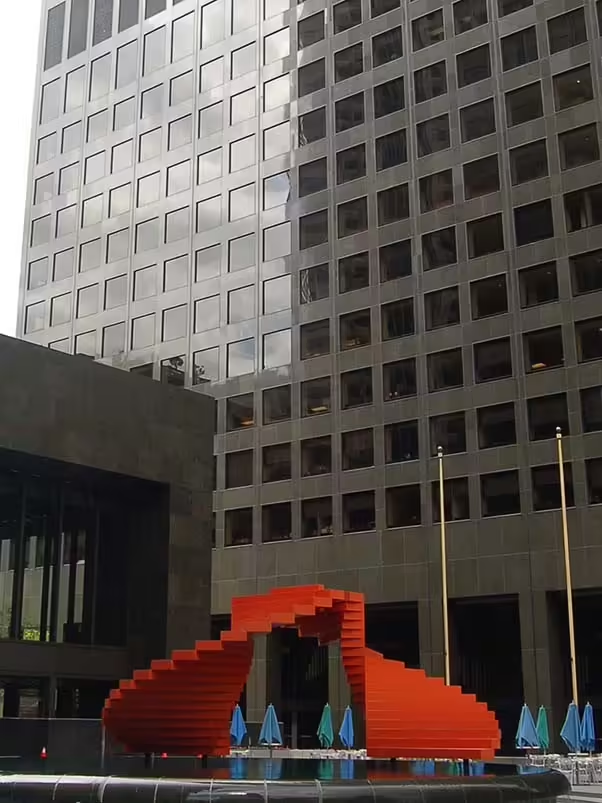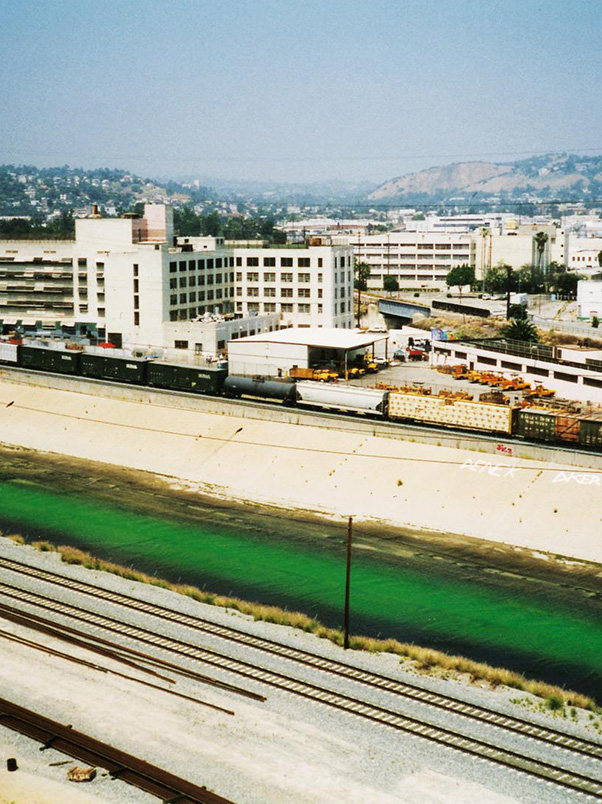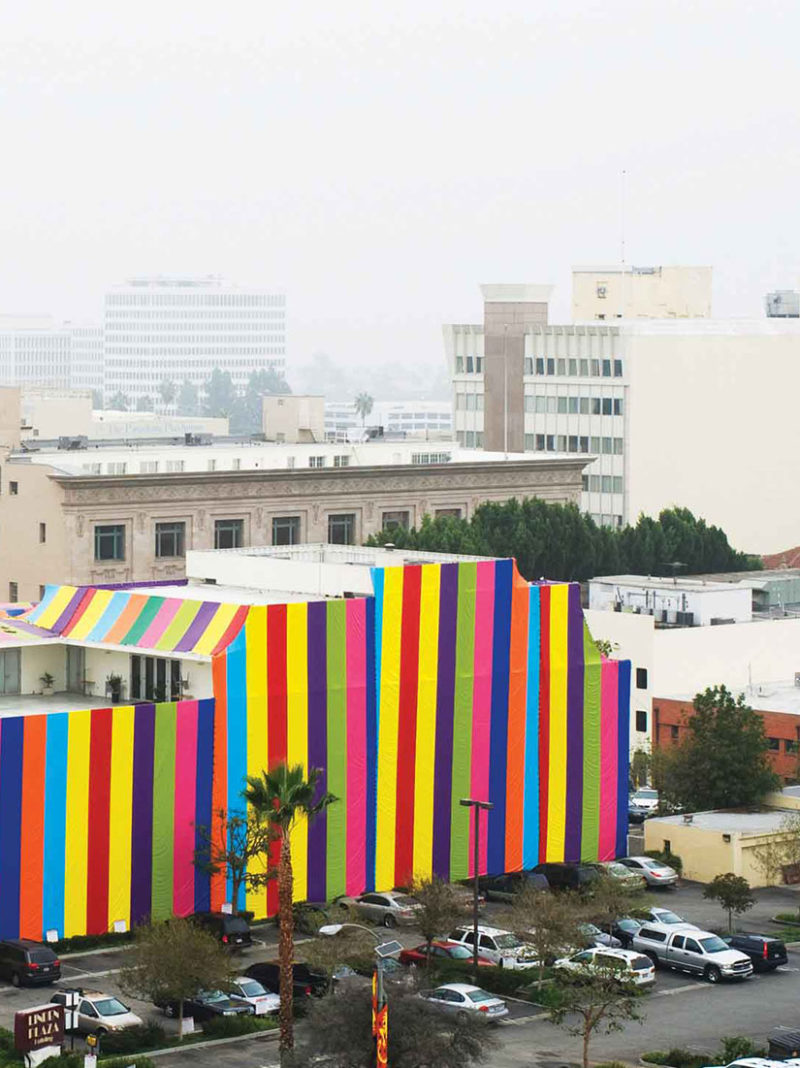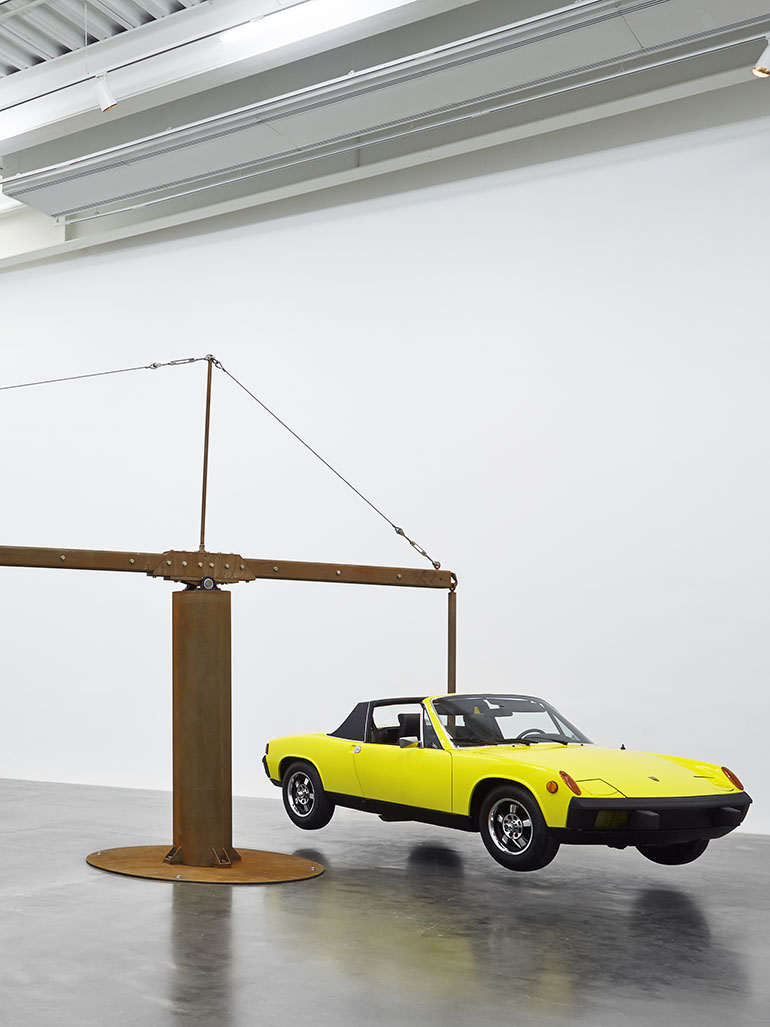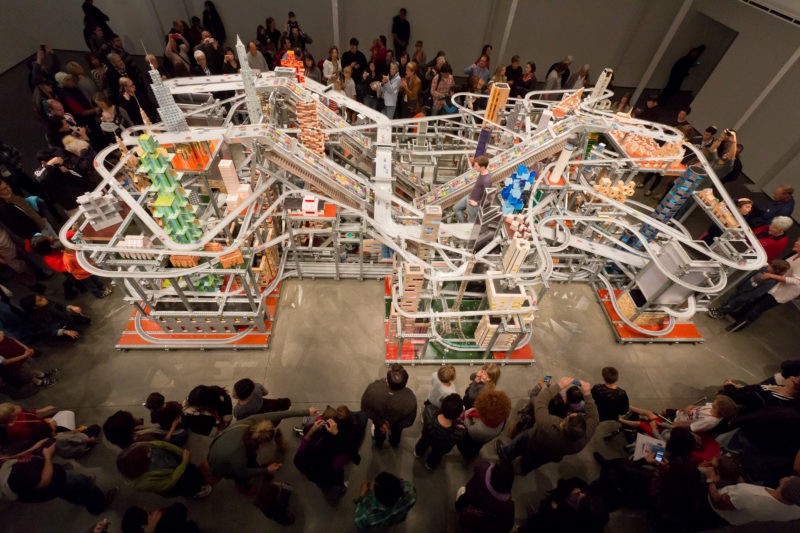
Chris Burden & Cars
Artist Chris Burden 1 had a long history of including automobiles in his art. In his early career, he crucified himself atop VW Beetle (work titled Trans Fixed 23). Burden started to design and build 100 mph, and 100 mpg automobiles centered on intuition called the B-Car (bicycle-car). In his piece called Big Wheel, he used a motorcycle to power a big wheel, while in Porsche with Meteorite 45, he suspended 6 a couple of objects above the floor of the museum on each end of a huge scale.
Metropolis II
However, his massive kinetic 7 sculpture Metropolis II is one to behold. The piece is a Hot-Wheels-scale metropolitan with 1,100 vehicles driving endlessly on 18 Teflon-coated highways. Two ramps elevated 12 feet high alongside three conveyor systems feed the cars back into the loop. The material and power needed to run the entire system mean that the sculpture is not just a sight to behold, but it’s also quite noisy.
Video: Metropolis II (the movie)
5 min 41 sec
How it was made
How it was made
The construction of the sculpture involved a team of eight people who started working on the project in 2006 in the artist’s Topanga Canyon studio. It was completed and launched in 2011. The piece was reinstalled at the Los Angeles County Museum of Art’s 8 Broad Contemporary Art Museum back in 2012 in a customized gallery with a viewing terrace.
The first version of the piece was a bit smaller in stature, called Metropolis I. it had only 80 cars whizzing around on single-lane freeways. This version was sold to the 21st Century Museum of Contemporary Art in Kanazawa 9, Japan 10.
We wanted to expand it and make it truly overwhelming – the noise and level activity are both mesmerizing and anxiety-provoking.
The tiny cars were designed and manufactured in China, unlike in the trial version, in which the artist simply bought the toys from the toy store. The custom-made cars have extra weight that facilitates the acceleration speed of 240 miles per hour.
Explaining the reason for having custom-made cars, the artist says, The original toy cars have very thin axles that wear out too fast.. Though the same problem could be experienced in Metropolis II, Burden says it is minimized by the fact that we made a lot of cars.
Material used
- 3 1/2 hp DC motors with motor controllers
- 1,100 custom-manufactured die-cast cars
- 13 HO-scale train sets with controllers and tracks
- Steel, aluminum, shielded copper wire, copper sheet, brass, various plastics, assorted woods and manufactured wood products, Legos, Lincoln Logs, Dado Cubes, glass, ceramic and natural stone tiles, acrylic and oil-based paints, rubber, sundry adhesives
Video: Behind the scenes
5 min 2 sec
Challenges
Video: Behind the scenes
Challenges
When running at capacity, the work can launch about 100,000 cars per hour. An operator is stationed at the center of the installation to ensure everything runs smoothly and can push an emergency stop button in case of an accident. There is also one attendant pacing around the sculpture.
Talking about the crackups that occur now and then in the 20-by-30-foot sculpture, Burden said:
I have seen spectacular pile-ups involving cars that spill off the road and derail trains. Every hour, 100,000 cars circulate through the system, so you are going to get some glitches. It is not digitized.
Solutions
The artist, together with his chief engineer Zak Cook included ingenious solutions that enable the traffic in the installation to flow seamlessly and minimize disasters. The subtlest is lane-dividing medians on the tiny highways that slightly taper from the bottom to the top edge on straight roads but remain fully vertical at the curve of the road.
This intelligent design helps the tiny cars to brake smoothly. When the cars reach a curve, the walls of the medians come in contact with the rims of the wheels. The friction generated slows them down. When the vehicles come out of the curve, the tapered medians detach from the rims, allowing them to pick up speed on straightaways and maintain traffic flow.
The meaning
The artist described his work as a complicated roller-coaster system and stated that the aim was not to build a literal scale model of a city but to evoke the vibe of a city. According to Burden, Metropolis II anticipates the era of driverless cars that would put to an end traffic gridlock.
It’s modeling something that’s on the twilight of extinction: the era of the ‘free car.’
According to Burden, sometime soon, people will simply jump into their cars and anytime and go wherever they please, how they please.
Those days are numbered, but I think it’s a good thing. The upside is that cars can be faster and safer, and you don’t have to worry about drunk drivers. Think about it: The cars in Metropolis II are going at a scale speed of 230 mph. That’d be great to do for real in LA.
Inspiration
The title of this artwork gives away its source of inspiration, which is Fritz Lang’s 1927 movie called Metropolis.
Although the artist has been using car toys in large parts of his career, he says that he does not have any particular interest in transportation or even urban planning.
Toys are interesting as objects – they’re the tools you use to inculcate children into adults. They are a reflection of society.
Though the work of Fritz Lang inspired Metropolis II, it has its own structures too, some of which are made from Lego, building blocks, and Lincoln Logs, transformed into skyscrapers and houses. Looking at the piece, it is no telling that the city doesn’t possess any sensible urban planning. It is a chaos of highways and closed organism from which there is no way out.
Where is the work now?
Billionaire businessman Nicholas Berggruen bought the nearly 30-foot wide sculpture for an undisclosed sum. He loaned the piece back to the museum through 2020 1718. Now, Metropolis II is located in an ideal place where visitors can see both from above and at ground level. The system runs for several hours at a time and only during weekends.
Conclusion
Metropolis II is a depiction of a madman’s answer to major cities’ dreaded traffic problems. The artist envisions that in the future, magnetics will heave your driverless car over a scale of a city at about 240 miles per hour.
The piece is a work of wonder. While the motion activities of the installation draw much of the attention, it is easy for viewers not to notice the attention to detail and the aesthetic elements.
Metropolis II passed the test artistically and succeeded commercially as well, making it one of the most important works of now-deceased Chris Burden.
More by Chris Burden
Explore nearby
LACMA, Los Angeles
 Barbara Kruger wrapped entire busesInstallation ended (dismantled in 2012)0 km away
Barbara Kruger wrapped entire busesInstallation ended (dismantled in 2012)0 km away
 Herbert Bayer's Double Ascension10 km away
Herbert Bayer's Double Ascension10 km away Olafur Eliasson turned rivers greenInstallation ended (in 1999)11 km away
Olafur Eliasson turned rivers greenInstallation ended (in 1999)11 km away Susan Silton covered entire museum with tarpInstallation ended (dismantled in 2007)22 km away
Susan Silton covered entire museum with tarpInstallation ended (dismantled in 2007)22 km away


